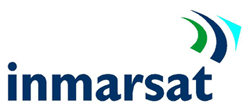From Via Satellite
Inmarsat is one of the biggest investors in new satellites and new capability. Thanks to a  rising profile in mobility markets, Inmarsat is likely to remain a highly influential player in the market and remain a major investor in new satellites. In an interview with Via Satellite, CEO Rupert Pearce talks about the challenges ahead for the operator.
rising profile in mobility markets, Inmarsat is likely to remain a highly influential player in the market and remain a major investor in new satellites. In an interview with Via Satellite, CEO Rupert Pearce talks about the challenges ahead for the operator.
Key to its future success is likely to be aviation. While Inmarsat’s business used to be substantially maritime, things are changing, with aviation, government and enterprise offering the operator significant growth opportunities. “From this diversified position, we can achieve many more shots on goal than we did a decade ago, and aviation passenger connectivity is a classic example of that. It could be a billion-dollar revenue stream for us in a decade or more, if we are successful, and if the market grows the way commentators think it will do,” says Pearce.
It strikes me as a bullish prediction, so I ask Pearce again whether a $1 billion revenue stream in aviation is realistic. He breaks down why that figure could be realistic. “If you look at the Average Revenue Per User (ARPU) based on services already in the market, we’re seeing revenues of between $150,000 to $200,000 per plane, per year; and these are for regional services that aren’t exactly fabulous in terms of the customer experience. On that basis, we’d reach a billion dollar annual revenue stream with some 5,000 aircraft under contract — and we’re already at 1,200, so it’s not an impossible target as commentators are projecting more than 25,000 connected aircraft globally by the mid-2020s. Passengers want Wi-Fi and it is valuable to them. The latest survey we did in aviation showed that people regard it as a necessity, not a luxury, and this is more the case in Asia than anywhere else,” says Pearce. Continue >